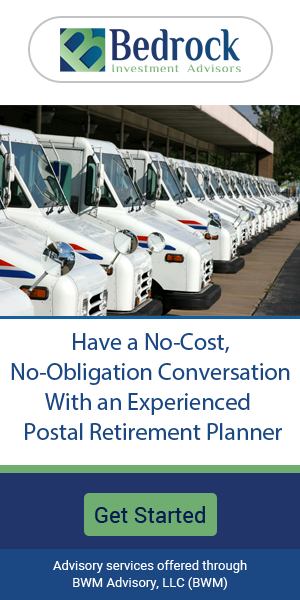Key Takeaways:
-
Understanding your options for postal worker health benefits is crucial to ensure you’re making the right decisions for your retirement and family’s future.
-
Timely action is essential when enrolling, changing, or managing your health benefits under the new Postal Service Health Benefits (PSHB) Program.
Why Your Health Benefits Matter More Than Ever
As a postal worker nearing retirement, one of the biggest decisions you’ll face is managing your health benefits. With the transition to the Postal Service Health Benefits (PSHB) Program, it’s essential to get answers to some pressing questions. Making the right decisions can save you money, provide better coverage, and secure your peace of mind.
Here are three critical questions you need to address to navigate your benefits effectively:
1. What Is the PSHB Program and How Does It Affect You?
- Also Read: New Rules for Federal Employees in 2025: What You Need to Know to Stay Ahead
- Also Read: Seven TSP Fund Allocation Strategies Federal Employees Are Using to Strengthen Their Retirement Portfolios
- Also Read: Military Buyback for Federal Employees: Is It Really Worth It? Here’s What You Need to Weigh Up
The PSHB Program, introduced in 2025, replaces the Federal Employees Health Benefits (FEHB) system for Postal Service employees and retirees. This shift impacts every eligible employee and annuitant, requiring careful consideration of:
Key Differences Between PSHB and FEHB
-
Eligibility Requirements: If you’re a current FEHB enrollee, your plan automatically transfers to the PSHB. However, retirees who were not part of FEHB before retirement must actively enroll during Open Season or qualifying life events (QLEs).
-
Medicare Integration: Medicare-eligible enrollees must enroll in Part B to maintain PSHB coverage unless exempt due to specific circumstances.
What You Need to Do Now
-
Review Enrollment Deadlines: Open Season for 2025 PSHB coverage ran from November 11 to December 13, 2024. Moving forward, changes to your plan can only be made during annual Open Seasons or after a QLE.
-
Understand Medicare Requirements: If you’re approaching age 65 or already eligible for Medicare, coordinating PSHB with Medicare can significantly lower your out-of-pocket costs. Ensure you meet Part B requirements to avoid penalties or lapses in coverage.
2. What Are the Costs Associated with PSHB Plans?
One of the most pressing concerns for retirees is how much health coverage will cost under PSHB. While the government continues to cover approximately 70% of premiums, understanding other expenses is key to budgeting effectively:
Breakdown of Costs
-
Premiums: Monthly premiums for PSHB plans vary based on whether you select Self Only, Self Plus One, or Self and Family coverage.
-
Deductibles: Depending on the plan you choose, in-network deductibles range from $350 to $2,000, with out-of-network costs significantly higher.
-
Out-of-Pocket Maximums: These caps protect you from excessive expenses, with limits set at $7,500 for Self Only plans and $15,000 for family plans in-network.
Additional Considerations
-
Prescription Drug Coverage: All PSHB plans integrate with Medicare Part D for eligible participants, capping annual prescription drug costs at $2,000.
-
Coinsurance and Copayments: Be prepared for coinsurance rates of 10%-30% for in-network services and higher for out-of-network providers. Copayments for primary care visits range from $20 to $40.
-
Unexpected Costs: Review your plan’s brochure for details on services that may require higher out-of-pocket contributions, like specialized care or treatments outside the network.
3. How Can You Maximize Your PSHB Benefits?
Understanding how to optimize your benefits can ensure you’re getting the most value from your plan. Here’s what you need to know:
Take Advantage of Preventive Services
PSHB plans cover many preventive services at no additional cost, such as annual checkups, vaccinations, and screenings. Regular use of these services helps detect potential health issues early, saving you money in the long run.
Coordinate with Medicare for Greater Savings
If you’re eligible for Medicare, coordinating Parts A and B with your PSHB plan can lead to significant savings. Many PSHB plans waive or reduce deductibles and copayments for enrollees with Medicare Part B.
Understand the Medicare Prescription Payment Plan
The new payment option introduced in 2025 allows you to spread out prescription drug costs over monthly payments, easing the financial burden of high medication expenses.
Review Your Annual Notice of Change (ANOC)
Every fall, your plan provider sends an ANOC detailing changes in premiums, benefits, and cost-sharing for the upcoming year. Pay close attention to these updates to avoid surprises and ensure your plan meets your needs.
Timelines You Need to Keep in Mind
Annual Open Season
Each year, Open Season occurs from mid-November to mid-December. During this time, you can:
-
Adjust your coverage level (Self Only, Self Plus One, or Self and Family).
-
Enroll if you’re newly eligible.
Qualifying Life Events (QLEs)
Certain life events, such as marriage, divorce, or a change in family size, allow you to make adjustments outside Open Season. You typically have 60 days to update your plan following a QLE.
Medicare Enrollment Periods
If you’re turning 65, remember the following Medicare enrollment timelines:
-
Initial Enrollment Period (IEP): A seven-month window around your 65th birthday.
-
General Enrollment Period (GEP): From January 1 to March 31 each year for those who missed IEP, with coverage starting in July.
-
Special Enrollment Period (SEP): Available under specific conditions, like losing employer-sponsored coverage.
Common Pitfalls to Avoid
Missing Deadlines
Failing to act during Open Season or missing Medicare enrollment deadlines can lead to gaps in coverage or financial penalties. Set reminders for these critical dates.
Choosing the Wrong Plan
Selecting a plan based solely on premiums can backfire if it doesn’t cover your specific healthcare needs. Carefully compare deductibles, copayments, and out-of-pocket maximums.
Ignoring Medicare Coordination
Not enrolling in Medicare Part B when required can result in higher out-of-pocket costs and jeopardize your PSHB coverage. Ensure you meet the requirements to maintain comprehensive benefits.
Get Ready for a Smooth Transition
Managing your postal worker health benefits under the PSHB Program might seem overwhelming, but staying informed and proactive can make all the difference. By addressing these three critical questions, you can secure the coverage you need while avoiding unnecessary expenses or complications.
Take the time to review your options, understand your costs, and coordinate with Medicare if applicable. Your health and peace of mind are worth the effort.












